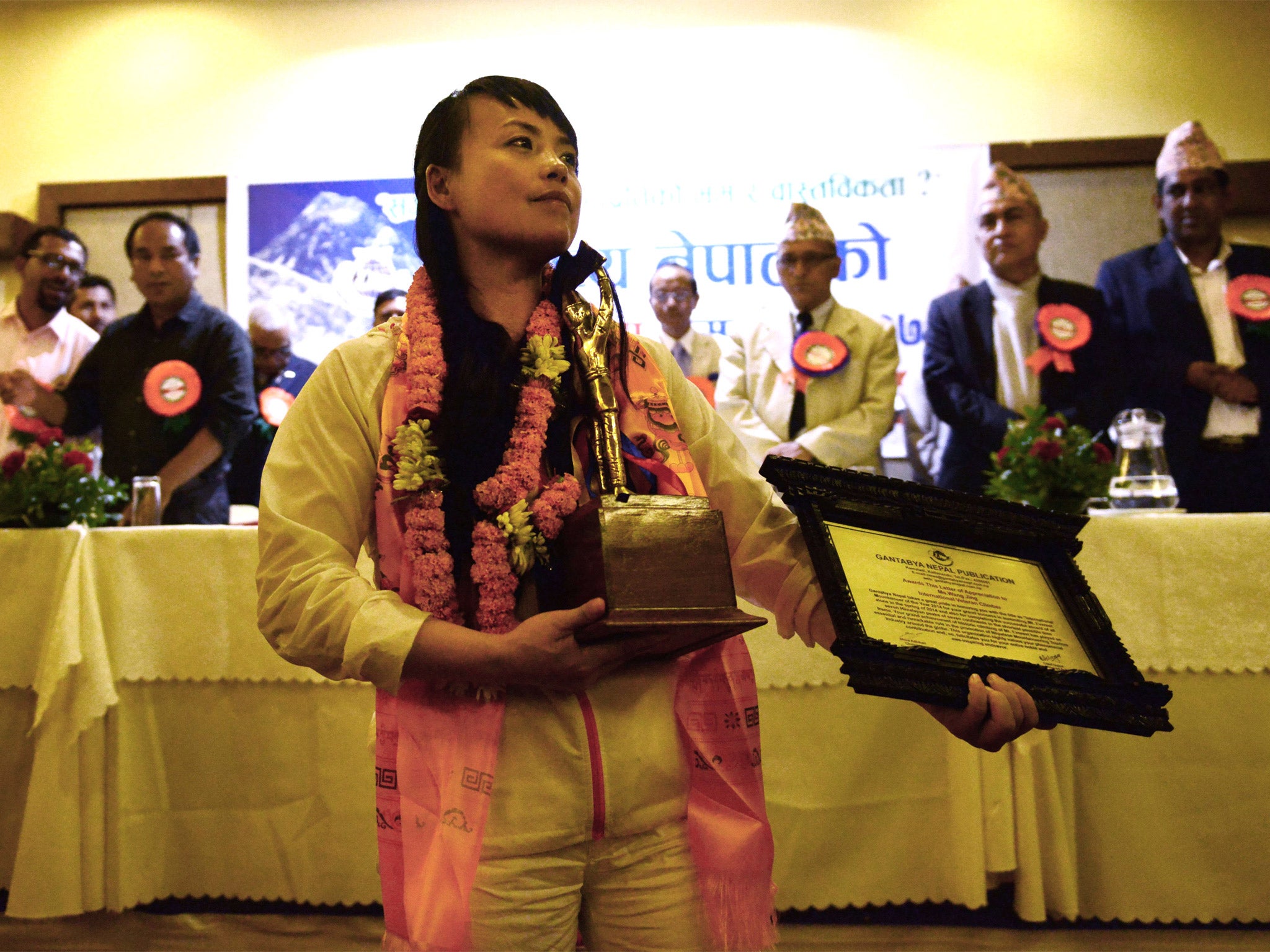Nepal recognises Everest ascent by Chinese climber who used helicopter

Your support helps us to tell the story
From reproductive rights to climate change to Big Tech, The Independent is on the ground when the story is developing. Whether it's investigating the financials of Elon Musk's pro-Trump PAC or producing our latest documentary, 'The A Word', which shines a light on the American women fighting for reproductive rights, we know how important it is to parse out the facts from the messaging.
At such a critical moment in US history, we need reporters on the ground. Your donation allows us to keep sending journalists to speak to both sides of the story.
The Independent is trusted by Americans across the entire political spectrum. And unlike many other quality news outlets, we choose not to lock Americans out of our reporting and analysis with paywalls. We believe quality journalism should be available to everyone, paid for by those who can afford it.
Your support makes all the difference.Nepal has risked sparking fresh controversy after it said it was acknowledging a Chinese climber’s ascent of Everest despite the use of a helicopter during her expedition.
Officials said in May they were investigating whether or not to formally recognise the ascent by Wang Jing, who became the only climber to reach the summit from the Nepalese side after a boycott by sherpas following a deadly avalanche.
There were claims the Chinese climber had used a helicopter to reach Camp Two, something that would breached the usual traditions for climbing the mountain. She in turn insisted her expedition used the chopper only to drop off advance supplies and had then returned to Base Camp. From there she said she had climbed the mountain with five local guides she had hired privately.
On Tuesday it emerged that the authorities in Kathmandu had sided with the 41-year-old climber and accepted her version of events. Tourism ministry official Madhusudhan Burlakoti said having looked into the matter, officials concluded that after dropping off tents at Camp Two, she had come down to Base Camp and started the ascent.
“We investigated the issue and decided to recognise her summit. We believe she returned to Base Camp after using the helicopter to deliver supplies and then climbed on foot,” he told the AFP news agency.
The ascent by the Chinese climber came just a month after an avalanche on the world’s highest mountain killed 16 Nepalese guides on 18 April. The impact of Everest’s deadliest ever accident was a boycott by most sherpas out of respect for their colleagues killed on the mountain. As a result, hundreds of foreign climbers were obliged to cancel expedition plans.
Flights to Camp Two, located at 6,400 metres or 20,997ft, are usually only permitted to carry out rescue or search missions. Yet officials had allowed their use to transport equipment after the 18 April avalanche meant the climbing route below, usually prepared with fixed ropes and ladders, had not been established.
The route along the mountain’s south-east ridge followed by the Chinese climber, was pioneered by New Zealander Sir Edmund Hillary and Sherpa Tenzing Norgay during their historic first ascent in 1953.
Join our commenting forum
Join thought-provoking conversations, follow other Independent readers and see their replies
Comments